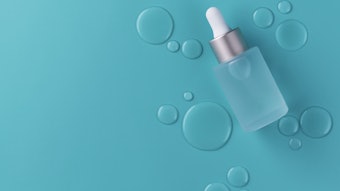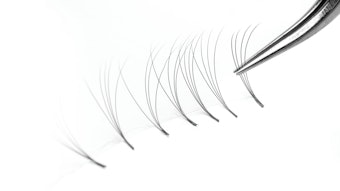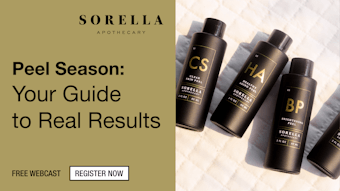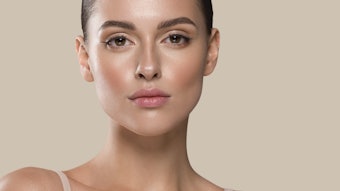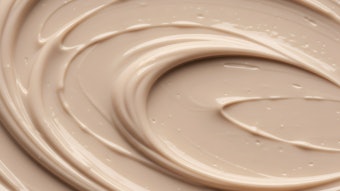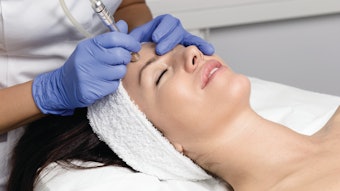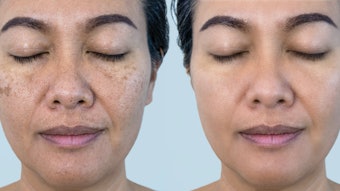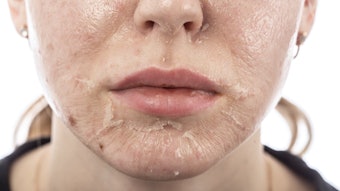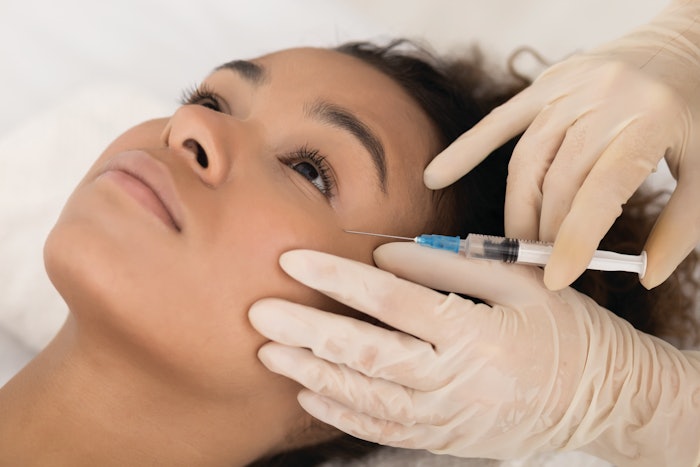
The field of esthetics offers a wide range of treatments that promise to transform your client’s skin. Some of the most sought-after treatments include injectables, such as neuromodulators and dermal fillers, and reports indicate that the injectable market will continue to grow1. However, this predicted growth doesn’t necessarily mean that injectables are the right treatment for everyone. Whether the avoidance of injectables comes from concerns surrounding their cost, long-term impact or side effects, many clients are seeking natural alternatives. Let’s review natural ingredient alternatives for these popular treatments, and how you can harness their power within the treatment room and your client’s homecare routine.
This article is only available to registered users.
Log In to View the Full Article
The field of esthetics offers a wide range of treatments that promise to transform your client’s skin. Some of the most sought-after treatments include injectables, such as neuromodulators and dermal fillers, and reports indicate that the injectable market will continue to grow1. However, this predicted growth doesn’t necessarily mean that injectables are the right treatment for everyone. Whether the avoidance of injectables comes from concerns surrounding their cost, long-term impact or side effects, many clients are seeking natural alternatives. Let’s review natural ingredient alternatives for these popular treatments, and how you can harness their power within the treatment room and your client’s homecare routine.
What are Injectables?
Injectables are cosmetic treatments that, like they sound, are injected into the skin to prevent or address signs of aging through various modes of action. The most common categories of injectables are neuromodulators and dermal fillers:
- Neuromodulators: Common neuromodulators used to address skin aging include Botox, Jeuveau, Dysport and the newest addition, Daxxify. These neuromodulators consist of proteins or a propriety peptide. When injected, they reduce muscle activity by adhering to receptors and blocking the signals that cause repeated muscle contractions, reducing the look of wrinkles1. Neuromodulators can be used to reduce existing signs of aging and prevent further signs of aging from occurring.
- Dermal Fillers: Some of the most popular fillers include Juvéderm, Restylane and Sculptra. Dermal fillers are formulated with various ingredients, including hyaluronic acid, poly-L-lactic acid, calcium hydroxyapatite and even collagen2. While each type works differently, fillers are injected into deeper layers of the skin to add instantaneous volume or gradually stimulate volume. This volume is temporary but can last anywhere from months to years, depending on the type of filler and its placement. Added volume helps smooth wrinkles, lift areas that have lost elasticity or change the appearance of the face for aesthetic balance.
Why Clients May Want Alternatives
The decision to get injectables is personal, and while their benefits may entice many, there are several reasons to seek alternatives, including:
- Cost considerations: Fillers and neuromodulators require ongoing treatments to maintain results, which can be expensive.
- Health concerns: There are health concerns that may preclude some from injectable procedures. Individuals who are currently pregnant, have certain autoimmune conditions or are allergic to specific ingredients should avoid injectables2.
- Fear of needles: Needles are not for everyone! Some clients are uncomfortable with pursuing cosmetic procedures that require the use of needles.
- Long-term effects & migration concerns: Recent studies3 (along with anecdotal reports) have indicated that fillers do not necessarily dissolve in ways that clients anticipate. This can lead to fillers lasting longer than intended or migrating in an undesirable way.
- Filler fatigue: Social media has played a significant role in popularizing injectables, particularly dermal fillers, over the past decade, but the widespread use of fillers has led to “filler fatigue” and a countermovement, with some now rejecting their use in favor of natural alternatives4.
Alternatives to Botox
Neuromodulators, like Botox, outperform dermal fillers in terms of market share4 which suggests a promising demand for their alternatives, too. If your client is looking for the wrinkle-reducing effects of Botox or a similar injectable, some options require no needles and no downtime. Natural “no-tox” ingredients can inhibit muscle movement and prevent the formation and worsening of fine lines and wrinkles.
Botanical Neuropeptides
Myoxinol, derived from okra seeds (Hibiscus esculentus), is a promising plant-based option for the no-tox-curious client. With regular topical application, Myoxinol has been shown to inhibit muscle contractions that contribute to the formation of wrinkles and expression lines5.
Stevia Extract
Another promising natural ingredient that's being explored as an alternative to Botox is stevia extract. Particularly, a compound called stevioside, extracted from the leaves of the Stevia rebaudiana plant6. Stevioside is known for its antioxidant and anti-inflammatory properties which protect, repair and soothe skin. Early research suggests it may also help limit the activity of acetylcholine, a neurotransmitter involved in muscle contraction7. By softening muscle movement, stevioside could potentially help reduce the appearance of fine lines and support the skin in resisting deeper expression wrinkles8.
Alternatives to Dermal Fillers
While neuromodulators may reign supreme, the market for dermal fillers is set to continue growing too1. If your client is seeking an alternative to dermal fillers, natural collagen-boosting ingredients offer a gentle way to add volume and smooth the skin. Some ingredients to explore include:
Brown Algae Extract
In vivo studies have indicated that brown algae extract has anti-glycation properties9. Glycation is a process in which sugars bind to protein causing damage and premature aging to the skin. Beyond glycation, brown algae extract has demonstrated an ability to stimulate collagen and elastin to create a more youthful looking complexion10. This ingredient is also ideal for clients who are seeking a vegan-friendly formulation.
Multi-Weight Hyaluronic Acid
Hyaluronic acid (HA) is well-known for its hydrating properties, but it has more benefits than that. When used in a topical multi-weight formula (combining various molecule sizes), HA can penetrate more deeply into the skin than a single weight alternative11. Research shows that HA offers multiple corrective benefits for the skin, including smoothing periorbital and nasolabial folds, reducing wrinkles and minimizing visible signs of aging11.
Soybean & Rice Peptides
Peptides derived from soybean and rice help protect the skin’s structural integrity by inhibiting enzymes that break down collagen and other essential proteins12. Soybean peptides have been shown to support collagen production, defend against free radical damage and reduce UV photodamage13. Similarly, rice peptides help preserve existing collagen while stimulating natural HA production, contributing to smoother, more hydrated and visibly plumper skin13.
Argan Stem Cells & Nutmeg Extract
Argan stem cells (Argania spinosa) are a vegan-friendly ingredient that helps promote a more youthful appearance by supporting the skin’s natural regenerative processes and softening the look of fine lines and wrinkles14.
Argan stem cells can be paired with nutmeg extract (Myristica fragrans) which contain macelignan, a compound shown to support collagen protection and protect against UV-induced collagen degradation15. Nutmeg extract also has antioxidant, anti-inflammatory, antibacterial and antifungal properties to help skin maintain a healthy appearance15.
Incorporating Into Professional Treatments and Homecare
When introducing neuromodulator and filler alternatives into your spa services, it’s not only important to consider what ingredients to use, but also how and when to incorporate them for maximum results.
Start with a consultation to learn more about your client’s goals, skin type and concerns. If they have received injectables in the past, or are currently doing so, recommend a service with natural ingredients that can enhance or maintain those effects. For clients who are new to injectables or prefer a holistic approach, suggest incorporating alternatives that deliver their desired results.
One of the biggest advantages of these natural alternatives is their versatility. The vast majority can be applied topically, meaning they can be slotted into the facial treatments you already offer without the need for special equipment. To reap the natural smoothing and plumping benefits of injectable alternatives, try layering movement-inhibiting ingredients with collagen-supporting and hydrating actives.
Encourage clients to extend the benefits at home with a complementary routine. When appropriate, consider recommending pairing these botanicals with advanced modalities like lasers, dermabrasion, micro frequency and light therapy to further enhance outcomes.
Market research is proving that the demand for injectables, specifically neuromodulators and dermal fillers, is continuing to grow, but that doesn’t mean that they are suitable for all clients. Regardless of their reasoning, there are several options for clients who want to harness the anti-aging effects of injectables without the use of needles. By incorporating natural, science-backed alternatives like botanical neuropeptides, brown algae extract and multi-weight HA into your spa offerings, you can attract a broader clientele seeking effective, needle-free solutions. Offering innovative, results-driven treatments not only enhances your service menu but also strengthens your client’s trust in your expertise.
References:
Nadim, Farzan and Dirk Bucher. (2014, December). “Neuromodulation of neurons and synapses.” Current opinion in neurobiology. https://pmc.ncbi.nlm.nih.gov/articles/PMC4252488/
Dermal filler do’s and don’ts for wrinkles, lips and more. U.S. Food and Drug Administration. https://www.fda.gov/consumers/consumer-updates/dermal-filler-dos-and-donts-wrinkles-lips-and-more
Jansen, Leigh, Leclerc, Olivier and Nils Peters. (2024, February 1). Here to stay: An attractive future for medical aesthetics. McKinsey & Company. https://www.mckinsey.com/industries/life-sciences/our-insights/here-to-stay-an-attractive-future-for-medical-aesthetics
Wollina, Uwe and Alberto Goldman. “Filler Migration after Facial Injection—a Narrative Review.” Cosmetics 10, no. 4 (August 17, 2023): 115–15. https://doi.org/10.3390/cosmetics10040115.
Nguyen, Trang Thi Minh, et al. 2024. "Sustainable Dynamic Wrinkle Efficacy: Non-Invasive Peptides as the Future of Botox Alternatives" Cosmetics 11, no. 4: 118. https://doi.org/10.3390/cosmetics11040118
Chatsudthipong, Varanuj and Chatchai Muanprasat. “Stevioside and Related Compounds: Therapeutic Benefits beyond Sweetness.” Pharmacology & Therapeutics 121, no. 1 (January 2009): 41–54. https://doi.org/10.1016/j.pharmthera.2008.09.007.
Matera, Soledad et al. “Sedative and Antispasmodic Effects of Stevia Rebaudiana and Noncompetitive Inhibition of Intestinal Contractility by Stevioside.” Pharmacologyonline. 1. (January 1, 2012): 1–8. https://www.researchgate.net/publication/279690133_Sedative_and_antispasmodic_effects_of_stevia_rebaudiana_and_noncompetitive_inhibition_of_intestinal_contractility_by_stevioside.
Stevioside. INCIGuide. (n.d.). https://inci.guide/plant-extracts-derivatives/stevioside#:~:text=Acetylcholine%20(ACh)%20is%20a%20chemical,days%20the%20results%20are%20intensified.&text=F.A.Q
Charoensiddhi, Suvimol et al. (2023, September 11). “Anti-skin glycation and collagen level stimulation of brown seaweed extracts and their compositional characteristics.” Algal Research. https://www.sciencedirect.com/science/article/abs/pii/S2211926423002904
Markiewicz, Ewa et al. (2022, May 19). “Anti-glycation and anti-aging properties of resveratrol derivatives in the in-vitro 3D models of human skin.” Clinical, cosmetic and investigational dermatology. https://pmc.ncbi.nlm.nih.gov/articles/PMC9126233/
Juncan, Anca Maria et al. (2021, July 22). “Advantages of hyaluronic acid and its combination with other bioactive ingredients in cosmeceuticals.” Molecules (Basel, Switzerland). https://pmc.ncbi.nlm.nih.gov/articles/PMC8347214/#sec5-molecules-26-04429
Waszkielewicz, Anna Maria and Kaja Mirosław. (2024, December 10). “Peptides and their mechanisms of action in the skin.” MDPI. https://www.mdpi.com/2076-3417/14/24/11495
Pintea, Andrada et al. “Peptides: Emerging Candidates for the Prevention and Treatment of Skin Senescence: A Review.” Biomolecules 15, no. 1 (January 9, 2025): 88–88. https://doi.org/10.3390/biom15010088.
Marchev, Andrey S. and Milen I Georgiev. (2020, April 25). “Plant in vitro systems as a sustainable source of active ingredients for cosmeceutical application.” Molecules (Basel, Switzerland). https://pmc.ncbi.nlm.nih.gov/articles/PMC7248771/
Lee, Kyung-Eun et al. (n.d.). “Effects of Macelignan isolated from Myristica fragrans (nutmeg) on expression of matrix metalloproteinase-1 and type I procollagen in UVB-irradiated human skin fibroblasts.” ResearchGate. https://www.researchgate.net/publication/232086686_Effects_of_Macelignan_Isolated_from_Myristica_fragrans_Nutmeg_on_Expression_of_Matrix_Metalloproteinase-1_and_Type_I_Procollagen_in_UVB-Irradiated_Human_Skin_Fibroblasts

